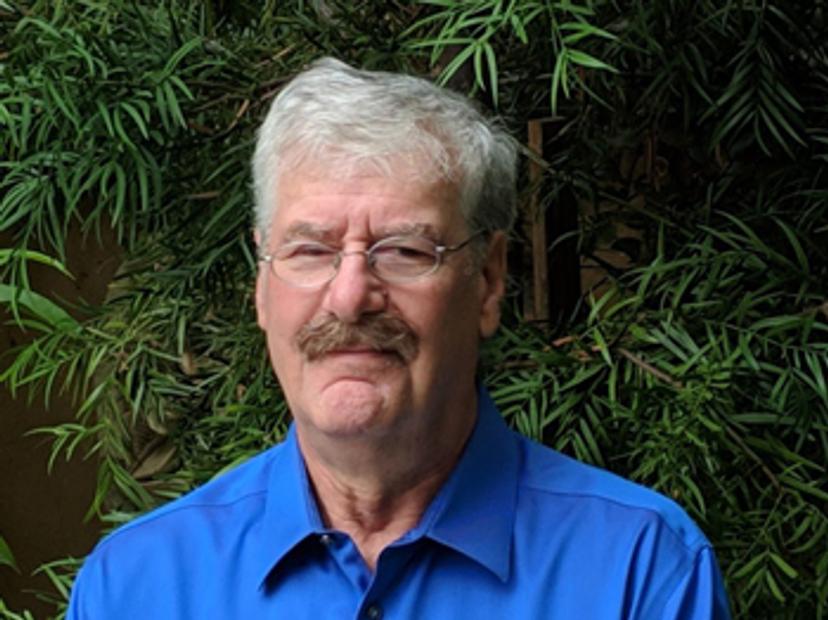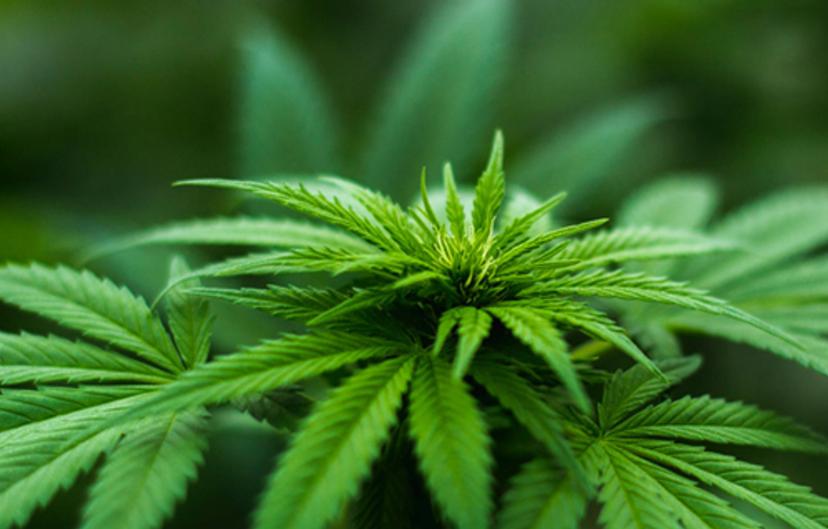A lighthouse to guide collaboration in cannabis science
For such a rapidly growing scientific industry bottlenecked by stigma and prohibition, working together is the only answer, says Dr. John S Abrams, Scientific Director of the Emerald Conference
31 Jan 2020
It’s an exciting time for scientists working in the burgeoning cannabis testing industry, but with every opportunity that arises, there’s usually an obstacle to overcome. Fundamental to accelerating research success under these challenging circumstances is increased cooperation between those at the forefront of the field, says Dr. John S Abrams, Chairman and CSO at The Clinical Endocannabinoid System Consortium (CESC) and Scientific Director of the Emerald Conference.
In this SelectScience interview, Abrams discusses the latest trends in cannabis science, the gaps in terpenoid research and the need to tackle concerns over vaping disease quickly. He also shares insights from CESC’s studies on biomarkers and brainwave patterns and looks ahead to the 2020 Emerald Conference in San Diego (Feb 26-29) and how it will “shake the tree” to lessen the esoteric nature of the field and unleash the power of collaboration.

What trends are you seeing in the cannabis testing industry?
I believe we're seeing a bit of a retrenchment in the industry right now because of the notoriety around the various causes of vaping disease or vaping illness. Folks are using this technology for inhaling both nicotine products and cannabis products. I don't think we've answered that completely, so we desperately need, as an industry, to get to the bottom of the root causes of this so we can move forward in a less-risk prone environment with the development of this product class.
As another approach to addressing this concerning lung pathology, we advocate a flower-first approach. We need to truly understand the flower matrix to the best of our ability. We believe the flower is at the crossroads of all efforts in the cannabis industry since processed products or products that are destined for ingestion all, at some point, start with botanical cultivation.
We are big champions of everyone achieving and maintaining what we call “Flower Fluency”. This involves achieving a basic understanding of the content, what is in actually in the flower matrix, the appropriate way to care for and store it, as well as understanding the harvesting and curing conditions.
As the industry ramps up and we see increasing efficiency in commodity production, the whole issue of appropriate risk-free storage is surfacing. Consequently, there is a large amount of effort going into appropriate solutions to that.
So, as it appears, the developing trends are on two fronts: reactive as a result of industry forces like the vaping disease crisis and proactive and strategic as the organic maturation of the industry and research moves forward.

Tell us about the main research projects you're working on and why they’re important
We have our own research in the discovery of certain key biomarkers, and it’s our view that the advancement of biomarkers — that is, (potentially unique) response variables — will help move the cannabis science space forward.
In particular, a few of the key biomarkers that we're actively working on involve a cell-based potency assay for cannabidiol (CBD) and cannabidiolic acid (CBDA). This is an assay that will read out the functional activity of a product rather than simply its content in mass (i.e. in mg). In biotech, we use this a lot because we're comparing the specific activities of the agents. By doing this, we're making sure that they are as active as they can be for their unit weight or unit mass. This is a key concept in biotech which is not as practiced in the small molecule, or, New Chemical Entity area of development. I would like to employ this technology to elaborate and quickly investigate whether various forms of CBD, CBDA, products are similarly active in equal weights.
As an industry, I don't think we're performing all that well in the terpenoid quantification and characterization space. I think more research is needed here.
Dr. John S Abrams CSO at The Clinical Endocannabinoid System Consortium (The CESC)
These key biomarkers could be defined as international units and reported much in the same way that you would look at a bottle of vitamins or dietary supplements and would be predicated upon the activity of those agents rather than the absolute content. We feel this is a huge advantage that we should be bringing to the cannabis science space, particularly for CBD- and CBDA-containing products.
Some other notable research that we’re working on includes collaborations in quantitative EEG brainwave studies to determine brainwave patterns in subjects pre- and post-cannabis use. We’re trying to make sense out of these patterns, how they may change based on the different chemotypes that are in chemovars and strains and, more importantly, to understand how individual responses may vary and how the genetics of that individual can help determine what their underlying response is. We are collaborating with organizations such as Endocanna Health and exploiting products like its EndoDNA assay kits to identify endocannabinoid system genetics. We are looking forward to imminent IRB approval so that we can discuss these fascinating results publicly.
Finally, in the context of cannabis health and wellness claims, we are actively trying to uncover biomarkers that allow an indication of what is the Endocannabinoid System Tone. That's important because we all have an endocannabinoid system and it is vital that we understand whether it is functioning at appropriate levels, is suppressed or is hyperfunctioning. We are developing those kinds of markers now and we are particularly interested in looking at the receptor activation state, whether it's the classical GPCR, CNR1/CNR2 (CB1/CB2) cannabinoid receptors or other receptors known to be involved in the system like the TRP Channel family. These are regaining recognition as being a key pharmacological target in the Endocannabinoid System space.
So, I would say these three major development areas would meet my criteria for top tier technology or science development and innovation in the cannabis science space.
What areas of the industry have the most room for growth?
Perhaps one technical area that I'm a strong supporter of is cannabis chemotyping. Again, this is focused at the level of the flower so we can understand how the differences in cultivation, chemovar, and the chemical content is essentially due to terpene and other volatile organic compound (VOC) variation. We think we understand pretty well how the major cannabinoids vary and how we can assign chemotypes by ratio type. But we desperately need to better understand the terpene and other VOC variants, their content and to have accurate and appropriate assays that can be practiced on a large scale.
One of the more interesting technologies that I recently became familiar with, although an older one, is two-dimensional gas chromatography or GC × GC. There are devices being produced now that will permit 2D GC terpenoid and other VOC analyses. I've seen very revealing patterns of expression in a given cultivar. I think this is a great approach for developing “Flower Fluency” and I am looking forward to hearing more about this at the upcoming 2020 Emerald Conference.

What is the key theme for this year's Emerald Conference?
The main theme this year is “Evolution”, and for me this signifies Evolution Through Collaboration. We are intensely aware of the need to foster collaboration in this industry, maybe more so than other more mature areas, because we're behind due to stigma and the results of prohibition. The best way to do this is through collaboration, quick training and delegation. I'm fond of calling it the ‘see one, do one, teach one’ approach where we don't have time to sit on top of one's egotistical capsule of information. We have to disseminate it, we have to train, and we have to get the next generation of experts ready to move this field forward. We take that message very seriously and are aiming to promulgate collaboration through a portal on the Emerald community where scientists could submit their abstracts to solicit additional collaborators to join their research.
For the 2020 Emerald Conference this year, we have taken a novel approach in how we're organizing and jurying the abstracts. We've created a selection matrix that focuses the activities that people are working on into various sectors of the industry. We think this brings clarification both to the presenter, for understanding where they fit, and for the audience as well.
As we receive abstracts and code them according to a set of keywords, we will be attempting to kind of “cover the earth” and shake the trees to find scientists that are working in those areas where we still need to present a full story.
More information on the Emerald Conference portal can be found by clicking here.
By asking people where their activities in the industry are focused, that helps segregate the topics and provides information for participants
Dr. John S Abrams The Clinical Endocannabinoid System Consortium (The CESC)
What else should people look out for?
We take a biotechnology perspective on how this industry is evolving and how products should be developed in this space. We also talk about upstream cultivation activities, downstream extraction and separation activities. We also orient our discussions to “substance” / “bulk substance”, and then how it is ultimately formulated, filled, finished, and packaged as customer-facing “product”.
In addition, we are having a Quality Summit Workshopthis year. It's an additional day with a small fee and will include a networking brunch and a nomenclature workshop, where we are going to come together to unify various terms that we're using in the industry, whether it's to describe certain types of products, certain procedures or process, the goal is to standardize the nomenclature.
Also, we have put together a series of presentations for the quality summit that will highlight aspects of the development of quality in the industry. We will start with a Keynote Presentation by Andrew Samann of Orion GMP Solutions. This talk will emphasize that safe, quality cannabis happens by science driven design and the ability to measure its safety and quality attributes accurately. This is followed by a presentation discussing the creation of reference standards and materials. We anticipate that this initial effort will help propel our Industry towards a common nomenclature that it can use in contracts, quality agreements and trade agreements between groups. As all this international commerce ramps up, there is an increasing need for this — we are striving to overcome ambiguity with clarity.
